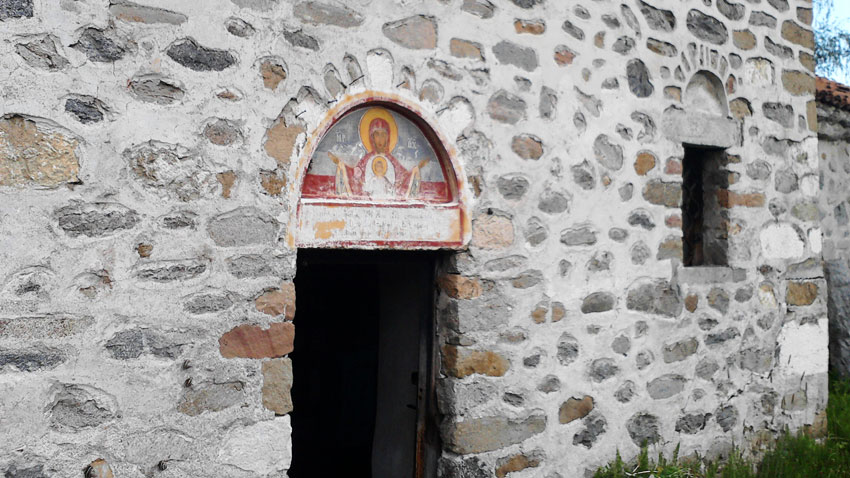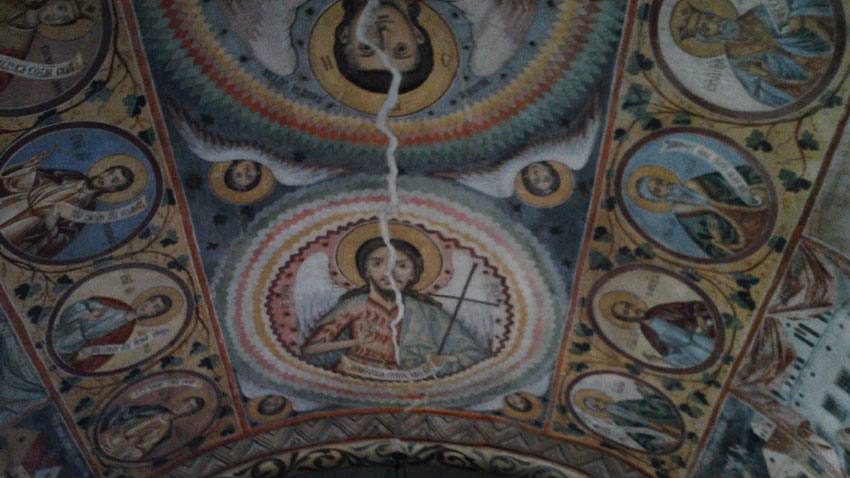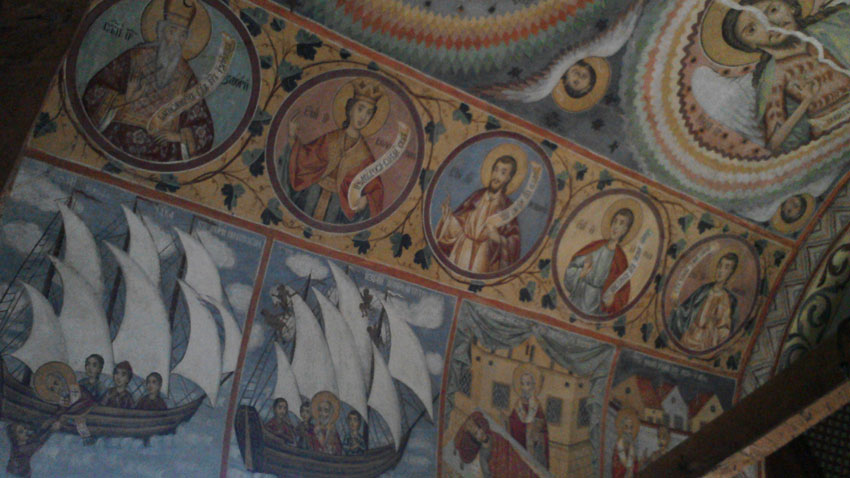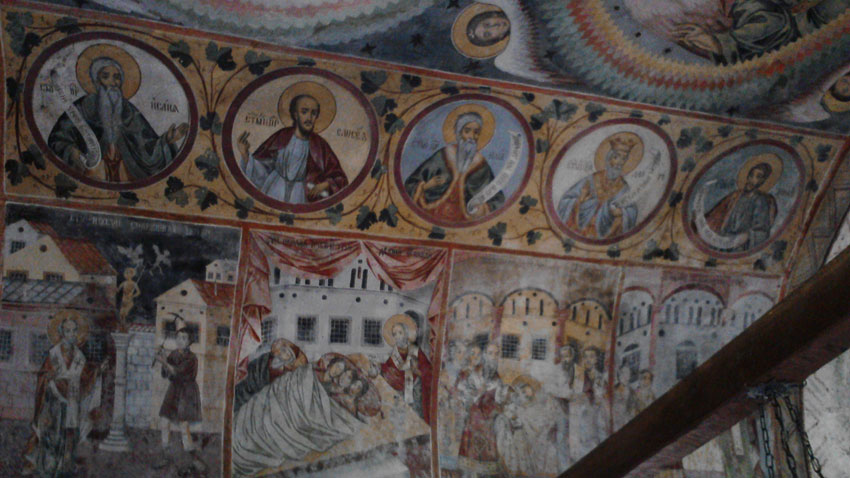The village of Maritsa has nothing special or different about it, compared to the other settlements at the foot of the Rila Mountain – it has clean streets and cozy yards with flowers and trees blossoming. At the same time a monument of culture can be found in the heart of this picturesque place – the St. Nikola /St. Nicholas/ Church. Director of Samokov’s History Museum Veselin Hadjiangelov gives us more details on the landmark, dated back to the Renaissance period and known for its three periods of construction:

“It was built up during the last decades of the 16th c., during the Ottoman period. Its architecture is typical for the late Middle Age – one-nave, single-pass and with walls thick 1 m, built of stone, bonded with mortar. The second period began in 1830, during the rule of Sultan Mahmoud. An inscription above the western entrance testifies on that. The third period was after 1869. The necessity of expanding the temple’s space is prompted by the expansion of the Christian population in the village of Makhala – the old name of Maritsa. The 1961 restoration process opted for keeping the original outlook of the church.”
Veselin Hadjiangelov gives us more details on the murals and iconographers:
 “Art expert Asen Chilingirov is one of the temple’s best researchers, as he wrote a monography on the matter. According to him the early murals were dated end-16th c. and those were made in two stages. Right after the building the inscription was placed on a clay pad. Several fragments from that period have been preserved. The second stage came a few years later. St. George and St. Demetrius were depicted as horsemen on lime plaster, alongside the saints. There are friezes with medallions of Christian saints in the altar space and also a cycle with festive scenes from the bible. Christ Pantocrator, Mother Mary and St. John the Baptist have all been depicted in a marvelous manner under the dome – in a double ring of medallions. A simplified style, close to the early-Christian art of the Comnen epoch can be seen in the late-16th c. murals. Perhaps those researchers were right, saying that the icon-painters came from Mount Athos, most likely from the close circle of St. Pimen Zografski, who had worked in the area of Sofia’s Mount Athos Minor. The western segment of the church hosts murals from the 19th c., depicted by icon-painters from the town of Samokov. Scenes from the life of St. Nicholas can also be seen under the dome.”
“Art expert Asen Chilingirov is one of the temple’s best researchers, as he wrote a monography on the matter. According to him the early murals were dated end-16th c. and those were made in two stages. Right after the building the inscription was placed on a clay pad. Several fragments from that period have been preserved. The second stage came a few years later. St. George and St. Demetrius were depicted as horsemen on lime plaster, alongside the saints. There are friezes with medallions of Christian saints in the altar space and also a cycle with festive scenes from the bible. Christ Pantocrator, Mother Mary and St. John the Baptist have all been depicted in a marvelous manner under the dome – in a double ring of medallions. A simplified style, close to the early-Christian art of the Comnen epoch can be seen in the late-16th c. murals. Perhaps those researchers were right, saying that the icon-painters came from Mount Athos, most likely from the close circle of St. Pimen Zografski, who had worked in the area of Sofia’s Mount Athos Minor. The western segment of the church hosts murals from the 19th c., depicted by icon-painters from the town of Samokov. Scenes from the life of St. Nicholas can also be seen under the dome.”

Mr. Hadjiangelov explains this wealthy church in a small place during the times of Ottoman rule like that:
“The villages along the upper segment of the Maritsa River were known for the ferrous mining across the entire Ottoman period. Hence the greater freedom of the population. The passage to what’s now the Borovetz Resort was guarded by dervendjii – Bulgarian armed militia. That was how the Christian population could build up its own temple and celebrate its religious fests…”
Doesn’t the St. Nikola Church need its contemporary donators, in order to remain for the next generations?
“The preservation and protection of the religious monuments are our duty. The old churches, monasteries and their heritage are part of our culture’s treasury. The church of Maritsa was saved over the 1960s by the newly-created back then Institute for Monuments of Culture,” Veselin Hadjiangelov says and invites everyone to visit the magnificent church of St. Nicholas in the village of Maritsa.

English version: Zhivko Stanchev
On January 17, the Orthodox Church honors the memory of St. Anthony the Great – a zealous advocate of Christianity. At an advanced age, he took part in the Church's struggle against the Arian heresy. Anthony got into an open dispute with the..
His Eminence Metropolitan Anthony of Western and Central Europe and BNR Director General Milen Mitev signed a Memorandum of Cooperation at the headquarters of the Bulgarian Orthodox Church Diocese of Western and Central Europe in the German capital,..
The Aprilov National High School in the beautiful Bulgarian town of Gabrovo nestled in the foot of the Balkan Range celebrates its 190th anniversary in 2025. Following in the traditions of the Gabrovo Mutual School – the first secular school in..
152 years after Bulgaria lost its beloved son and advocate for a free, independent and tolerant state – Vasil Levski, his personality continues to excite..

+359 2 9336 661
